
Images of Liberty and Power
[Updated June 12, 2011]
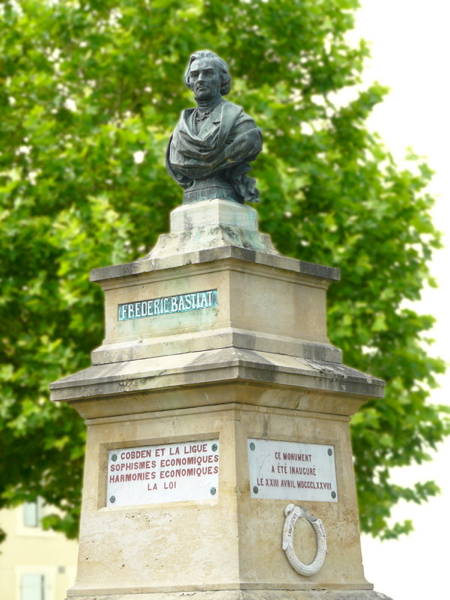 |
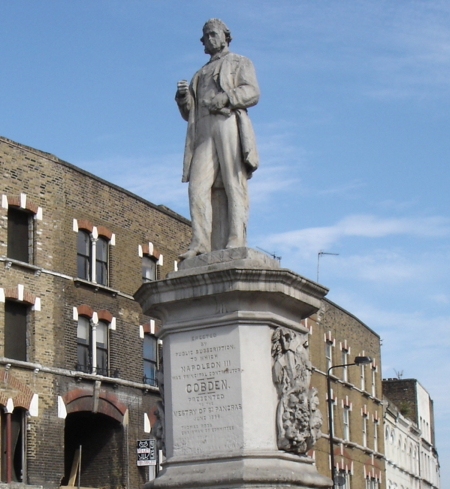 |
Gabriel-Vital Dubray, "Frédéric Bastiat"
(1878) |
W. and T. Wills, "Cobden" (1868) |
Left image: A monument erected in memory
of the French free trade advocate Frédéric Bastiat (1801-1850) in the
town of Mugron in S.W. France (1878). The sculptor was Gabriel-Vital
Dubray (1813-1892). The original monument was largely
destroyed by the Nazis in 1942. A contemporary engraving shows what it
looked like [see below].
|
|
 |
 |
The plaque lists the works for which
Bastiat was best remembered. The top three were part of the original
monument: Cobden and the League (1845), Economic
Sophisms (1845, 1848), Economic Harmonies (1850);
the fourth titleThe Law (1850) was added in 2001 for
the bicentennial celebration of his birth. It also states that "This
Monument was inaugurated April 23, 1878." What it does not
say is that it too was erected by public subscription organized
by the Société d'économie politique. |
The plaques states that the statue
was
"erected by public subscription, to which Napoleon III was
principal contributor. Presented to the vestry of St. Pancras,
June 1868. Thomas Ross, chairman of committee." |
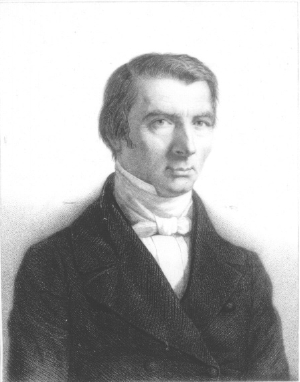 |
 |
A picture of Frédéric Bastiat (1801-1850) |
A picture of Richard Cobden (1804-1865) |
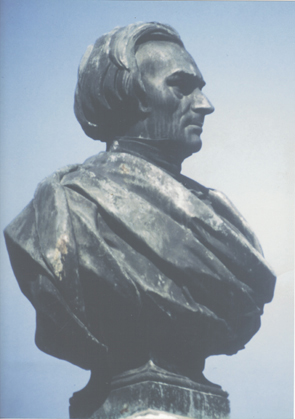 |
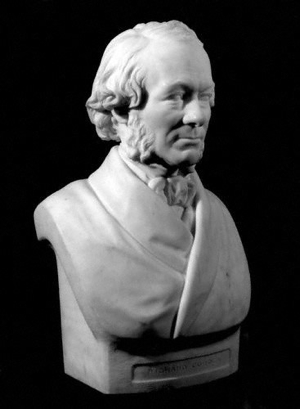 |
At the insistence of his aunt, Bastiat
consented to have a bust made in 1849. It was done by M. Henri
Sobre fils. and copies were made for many of his friends, including
Richard Cobden. It is likely that the 1849 version was used as
the model for Dubray's likeness on the monument. The image shown
here is from the monument. There is no known copy of the original
1849 version. |
A bust made of Cobden, probably after
his death. |
 |
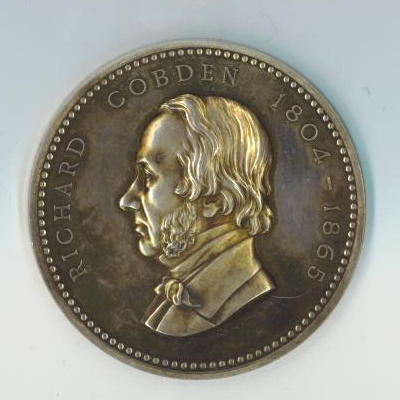 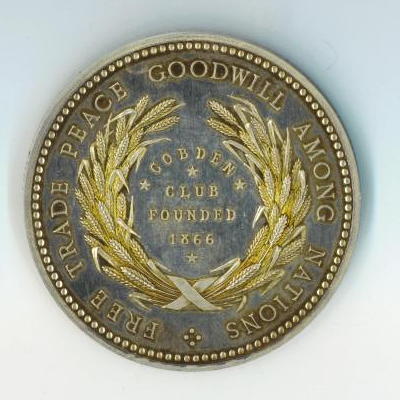 |
A medal with the likeness of Bastiat
was made by the Société d'économie politique in 1892 to celebrate
the 50th anniversary of its founding. We have not yet been able
to find a picture of it. |
A medal made to celebrate Richard Cobden:
obverse has the head of Cobden; reverse has the motto "Free
Trade, Peace, Goodwill among Nations", the statement "Cobden
Club founded 1866, and a wreath of ears of wheat (or "corn")
(after 1866) |
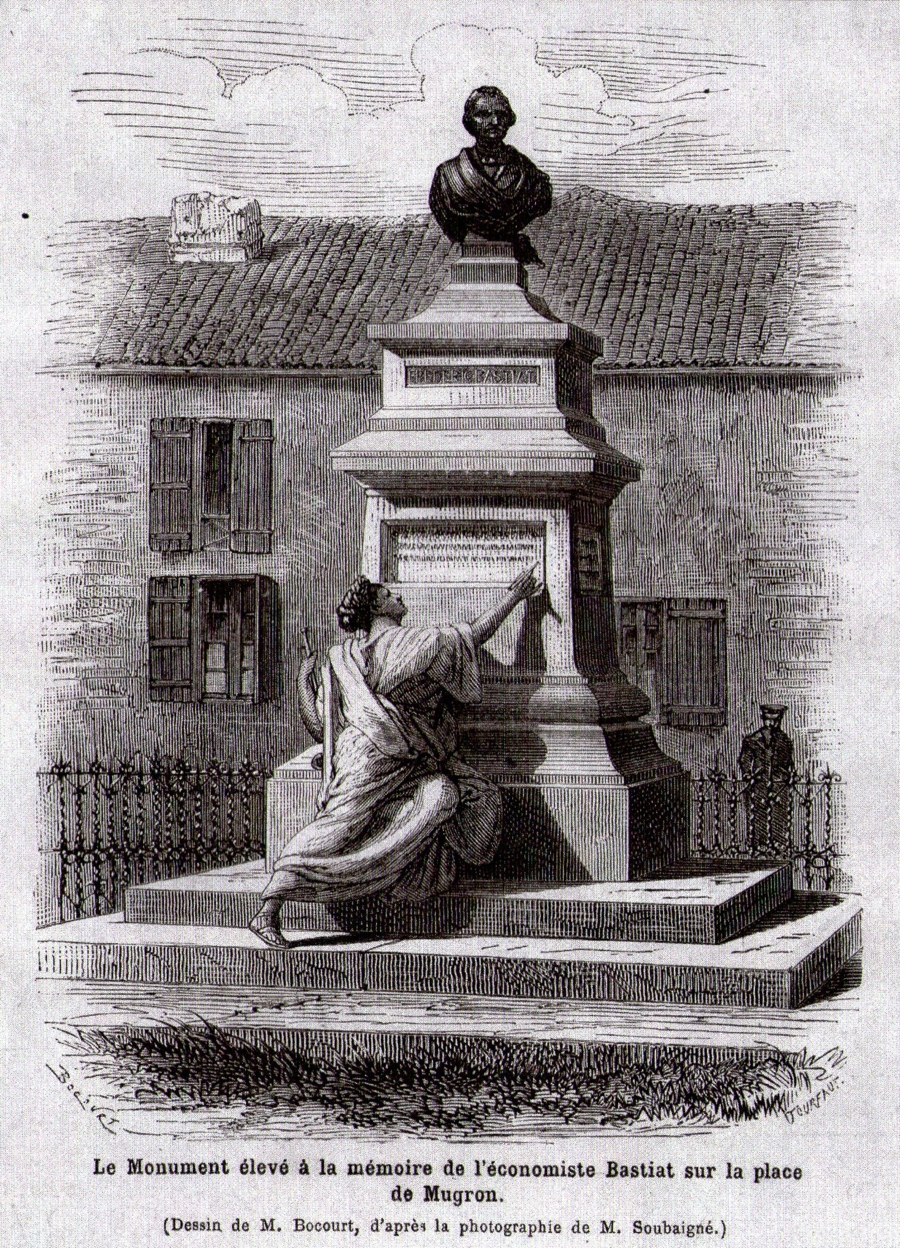 |
Gabriel-Vital Dubray, "Frédéric
Bastiat"
(1878) |
This engraving from the magazine Le Monde illustré appeared shortly after the inauguration of the monument in Mugron on 23 April 1878 and accompanied a report of the event. The well-knpwn sculptor Gabriel-Vital Dubray (1813-1892) had been commissioned to design and create the monument. Dubray was a very successful sculptor who had created many important works during the Third Empire (1852-1870) for which he was made a knight of the Legion of Honor. Many of his works were displayed in churches and even in the Louvre Palace.Thus it was quite a coup to get an artist of his stature and importance to do the Bastiat monument. As the engraving above indicates, Dubray planned an elaborate monument with the classical figure of "Fame" leaning against the pedestal and writing with her pen the titles of the three books for which Bastiat was best remembered and for which he deserved to be famous: the work in which he first introduced the French to the ideas on free trade of Richard Cobden and the Anti-Corn Law League Cobden and the League (1845), his best selling collection of witty and clever articles debunking the economic myths of the protectionists Economic Sophisms (1845, 1848), and his incomplete magnum opus on economic theory Economic Harmonies (1850). It seems that nature did not smile upon Bastiat's monument on that occasion as it rained for most of the day. This did not stop numerous speakers including Léon Say, the Minister of Finance, from reminding the crowd of well wishers of Bastiat's importance to the classical liberal movement in France and his contributions to the deregulation of the French economy. At 7.00 pm a crowd of 150 gathered in the local school for a banquet which lasted until 11.00 pm when they dispersed. But they did not retire to bed apparently. The correspondent for the Journal des économistes remarked wryly that "the streets of Mugron were full of singing and noise for the rest of the night" thus bringing to an end a veritable "festival of peace." Unfortunately this festival of peace did not survive the orgies of statism and nationalism which were the First and Second World Wars. M. Jacques de Guenin, the director of the Cercle Frédéric Bastiat in France states that in 1942 during the occupation of France by the Nazis any statues containing bronze were to be seized and broken up for their metal content (presumably to make weapons). This was the unfortunate fate of the Bastiat monument - the bust of Bastiat and the figure of Fame were taken for scrap for war matériel. The bust could be reconstituted after the war because the original mold had survived, but the figure of Fame was lost forever. It is both sad and ironic that this would be the fate of Bastiat's monument as Bastiat had dedicated himself to the cause of peace and opposition to war as his writings and his participation in the Peace Congresses of the late 1840s attest. However, one might say that "Fame" did eventaully return to Bastiat's monument in spite of what the Nazis and 50 years of the European welfare state had done to it. Bicentennial celebrations of Bastiat's birth were organised in 2001, including a major conference on his political and economic ideas and a formal visit to his monument in Mugron to unveil an addition to the list of his most famous works. The title of the pamphlet "La Loi" (The Law) was added in respect to the many American visitors who hold this work of Bastiat's in high regard. "Fame" had at last been recalled to complete the work which she had begun in 1878. |
Sources for the images:
|